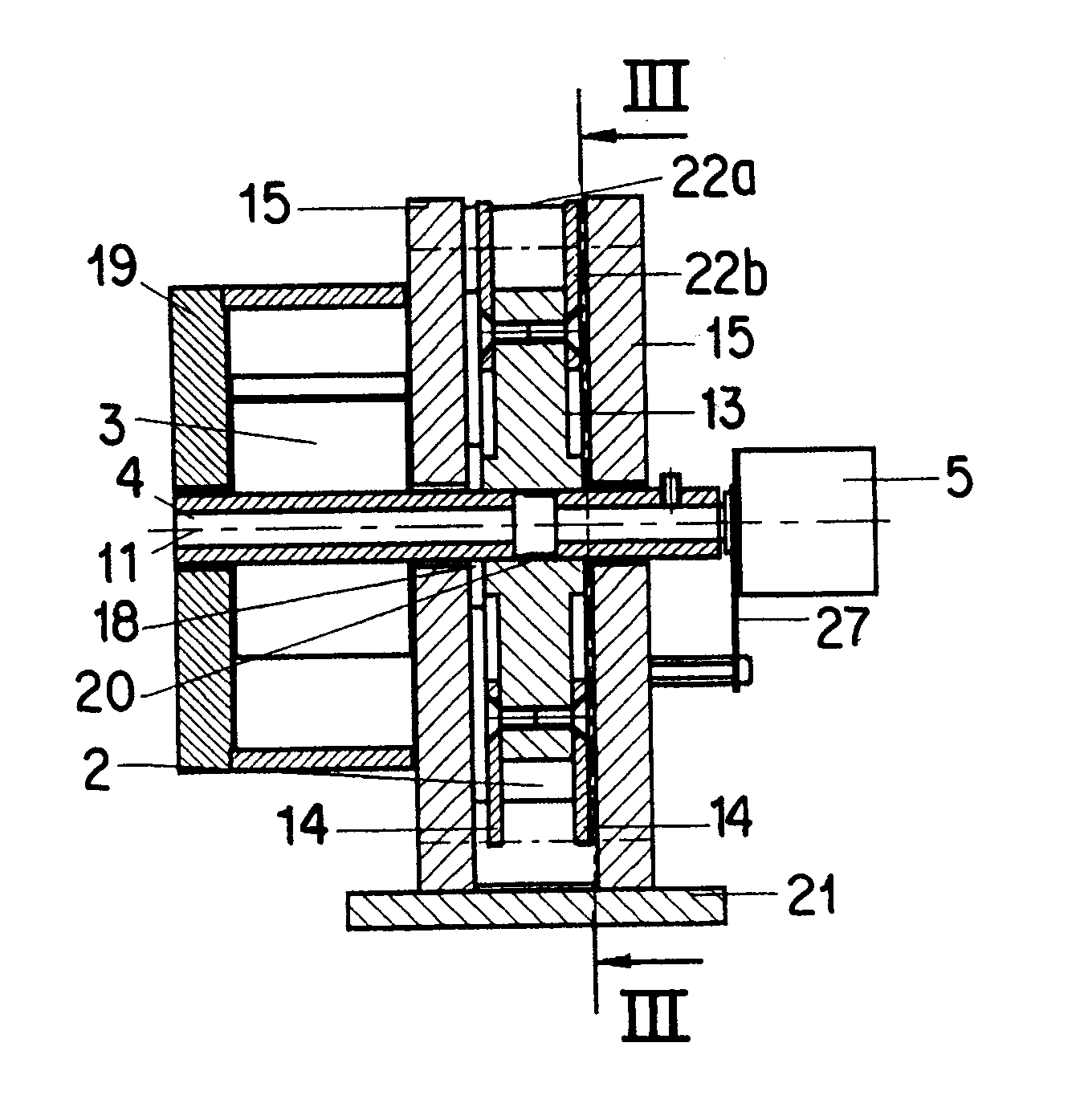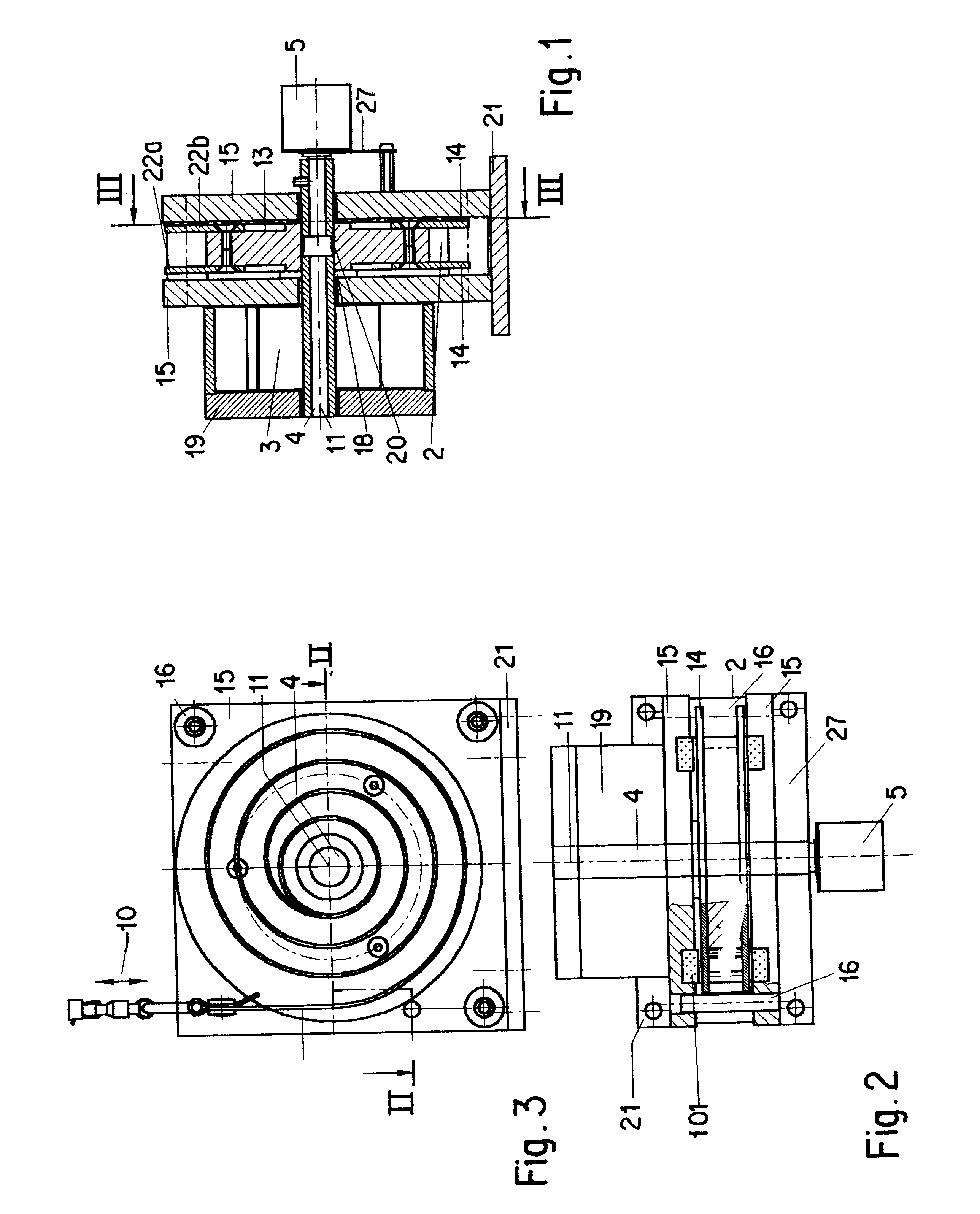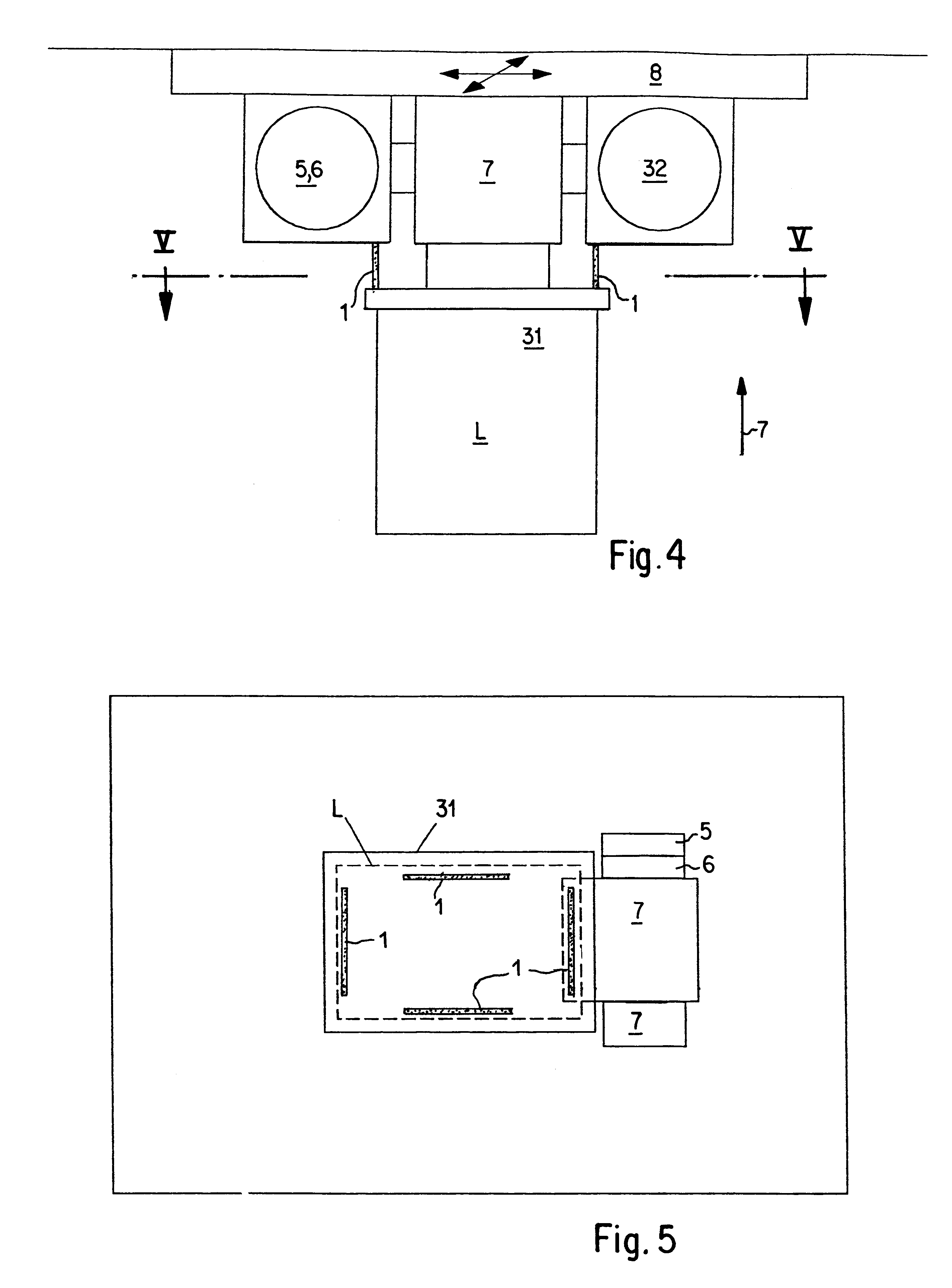Pull element travel sensor
a technology of travel sensor and pulley, which is applied in the direction of mechanical measurement arrangement, instruments, using mechanical means, etc., can solve the problems of limited service life, high mechanical wear, and the peripheral length of a single winding on the winding drum becomes progressively greater
- Summary
- Abstract
- Description
- Claims
- Application Information
AI Technical Summary
Benefits of technology
Problems solved by technology
Method used
Image
Examples
Embodiment Construction
Referring firstly to FIGS. 1 through 3, it will be noted at this point that, while FIGS. 1 and 2 show the pull element travel sensor according to the invention, for reasons of clarity of the drawing, without the tensile or pull element which will generally be in the form of a band or belt, the band or belt forming the pull element is in fact shown in FIG. 3 and indicated therein by reference numeral 1, including spiral winding thereof on a measuring or winding drum generally identified by reference numeral 2 in FIGS. 1 through 3. The cross-sectional view in FIG. 1 shows the coaxial arrangement of the winding drum 2, a rotary angle sensor 5 for detecting the rotary movement or the angular positioning of the winding drum 2, and a flat spiral spring 3 operable to urge the winding drum 2 in the direction of winding the pull element or band 1 on to same.
As can be seen from FIG. 1, the winding drum 2 comprises a drum core 13 which is fixed non-rotatably by means of a tolerance ring 20 on ...
PUM
 Login to View More
Login to View More Abstract
Description
Claims
Application Information
 Login to View More
Login to View More - R&D
- Intellectual Property
- Life Sciences
- Materials
- Tech Scout
- Unparalleled Data Quality
- Higher Quality Content
- 60% Fewer Hallucinations
Browse by: Latest US Patents, China's latest patents, Technical Efficacy Thesaurus, Application Domain, Technology Topic, Popular Technical Reports.
© 2025 PatSnap. All rights reserved.Legal|Privacy policy|Modern Slavery Act Transparency Statement|Sitemap|About US| Contact US: help@patsnap.com



